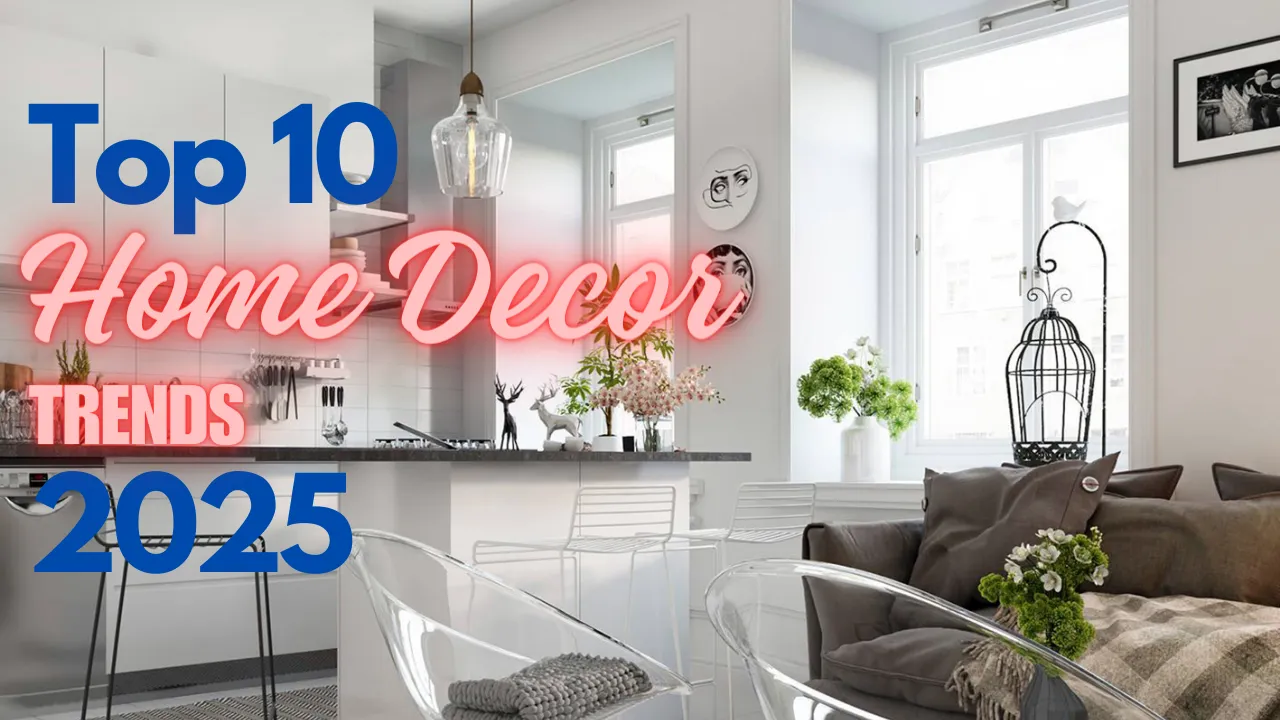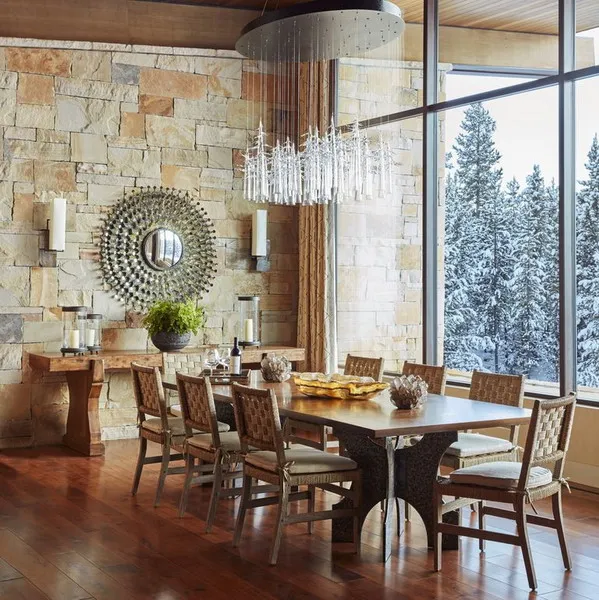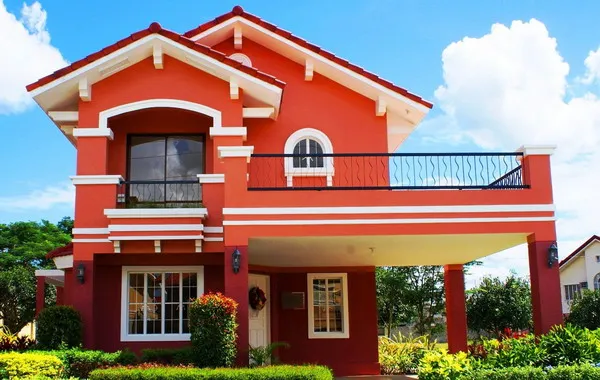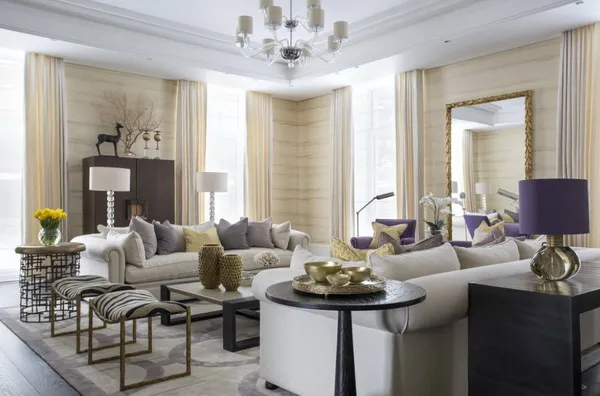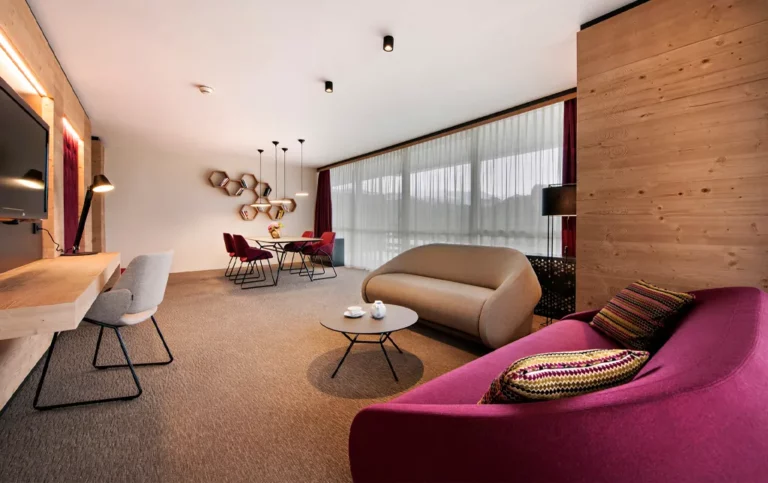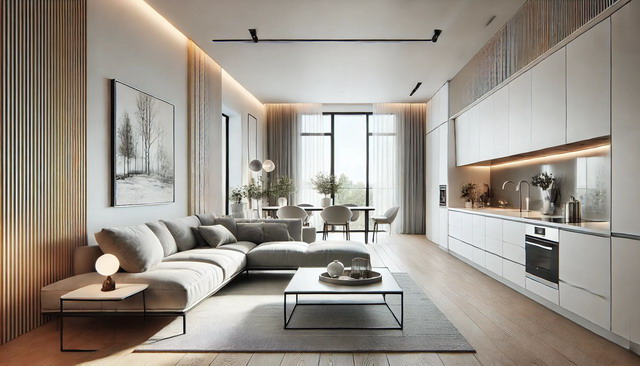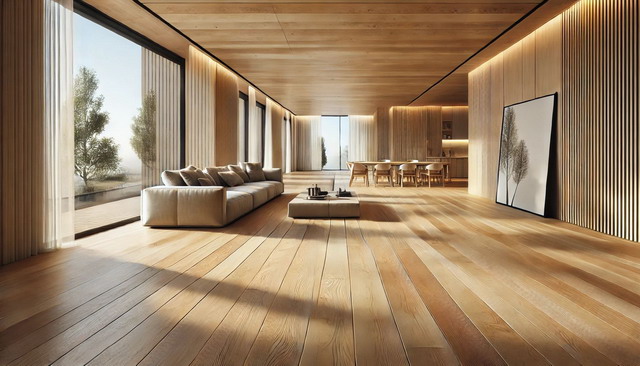Top 10 Home Decor Trends 2025
Last Updated on July 20, 2024 by Mutiara
Home decor is more than just aesthetics; it’s a reflection of our personalities, values, and lifestyles. As we approach 2025, the world of interior design continues to evolve, embracing new ideas while reinterpreting classic concepts. Staying updated with the latest trends can inspire us to create spaces that are not only beautiful but also functional and harmonious. This article explores the top 10 home decor trends of 2025, offering insights and tips on how to incorporate them into your living spaces.
1. Sustainable and Eco-Friendly Designs
Sustainability has become a key consideration in many aspects of our lives, and home decor is no exception. The trend towards eco-friendly designs continues to gain momentum, driven by a growing awareness of environmental issues and a desire for healthier living environments.
Eco-Friendly Materials
One of the primary ways to achieve sustainable decor is through the use of eco-friendly materials. Reclaimed wood, bamboo, recycled metals, and organic fabrics are becoming increasingly popular. These materials not only reduce the carbon footprint of our homes but also add a unique character and warmth.
Benefits of Sustainable Designs
Incorporating sustainable designs offers numerous benefits. Eco-friendly materials often have a lower environmental impact and can improve indoor air quality. Additionally, sustainable decor tends to be more durable, reducing the need for frequent replacements and contributing to long-term savings.
Tips for Sustainable Decor
To embrace this trend, consider investing in furniture made from reclaimed wood or bamboo. Look for textiles and upholstery made from organic cotton or recycled materials. Opt for energy-efficient lighting and appliances to reduce energy consumption. By making these choices, you can create a home that is stylish, sustainable, and environmentally responsible.
2. Biophilic Design
Biophilic design, which seeks to connect people with nature, is another major trend for 2025. This design philosophy is based on the idea that incorporating natural elements into our living spaces can enhance our well-being and overall quality of life.
Natural Elements
Biophilic design emphasizes the use of natural elements such as plants, natural light, water features, and organic materials. Indoor plants, in particular, have become a staple in biophilic interiors, providing both aesthetic appeal and health benefits.
Psychological and Health Benefits
Studies have shown that biophilic elements can reduce stress, improve mood, and increase productivity. Natural light and greenery can enhance air quality and create a more relaxing and rejuvenating environment.
Tips for Biophilic Design
To incorporate biophilic design into your home, start by adding a variety of indoor plants. Choose plants that thrive indoors and require minimal maintenance. Maximize natural light by using sheer curtains or strategically placing mirrors to reflect light. Consider incorporating natural materials like wood, stone, and clay in your decor. By bringing the outdoors in, you can create a serene and invigorating living space.
3. Smart Home Integration
The integration of smart home technology is revolutionizing the way we interact with our living spaces. As technology continues to advance, smart devices are becoming more accessible and essential for modern home decor.
Popular Smart Devices
Smart thermostats, lighting systems, security cameras, and voice-controlled assistants are just a few examples of devices that can enhance convenience and efficiency in our homes. These devices allow for greater control and customization, making it easier to create a comfortable and personalized environment.
Enhancing Convenience and Efficiency
Smart home technology can simplify daily tasks and improve energy efficiency. For instance, smart lighting systems can be programmed to adjust based on the time of day, reducing energy consumption and creating the perfect ambiance. Smart thermostats can learn your preferences and adjust the temperature accordingly, ensuring optimal comfort while saving energy.
Tips for Smart Home Integration
To embrace this trend, start by investing in a few key smart devices. Choose devices that are compatible with each other and can be controlled through a single platform or app. Consider installing a smart home hub to centralize control. By integrating smart technology, you can create a more efficient, secure, and enjoyable living space.
4. Minimalist Aesthetics
Minimalism continues to be a dominant trend in home decor, offering a sense of calm and simplicity amidst the chaos of modern life. The minimalist approach focuses on clean lines, neutral color palettes, and uncluttered spaces.
Principles of Minimalist Design
Minimalist design is characterized by simplicity and functionality. It involves reducing excess and focusing on the essentials. This approach creates open and airy spaces that promote relaxation and clarity.
Creating Serene and Functional Spaces
Minimalism is not just about aesthetics; it’s also about creating functional and harmonious living environments. By decluttering and organizing, you can create a space that is both beautiful and practical.
Tips for Achieving Minimalist Look
To achieve a minimalist look, start by decluttering your space. Keep only the items that you truly need and love. Choose furniture with clean lines and neutral colors. Use storage solutions to keep surfaces clear and organized. By embracing minimalism, you can create a serene and functional home that enhances your well-being.
5. Multifunctional Spaces
The trend towards multifunctional spaces reflects the changing needs and lifestyles of modern households. As more people work from home and seek flexible living arrangements, the demand for versatile and adaptable spaces has increased.
Versatile Furniture and Layouts
Multifunctional spaces often feature furniture and layouts that can serve multiple purposes. For example, a home office can double as a guest room, or a living room can be transformed into a workout area.
Advantages of Multifunctional Spaces
Creating multifunctional spaces allows for greater flexibility and efficiency. It enables you to make the most of your available space and adapt to different activities and needs.
Tips for Designing Multifunctional Spaces
To design a multifunctional space, choose furniture that is versatile and can be easily reconfigured. Look for pieces that offer built-in storage or can serve multiple functions, such as a sofa bed or a fold-out desk. Use dividers or screens to create separate zones within a room. By designing multifunctional spaces, you can maximize the utility and adaptability of your home.
6. Vintage and Retro Revival
Nostalgia is a powerful force in design, and the revival of vintage and retro styles continues to captivate homeowners. This trend combines the charm of the past with contemporary sensibilities, creating unique and eclectic interiors.
Key Vintage Elements
Vintage decor often includes mid-century furniture, bold patterns, and retro colors. These elements add character and personality to a space, evoking a sense of nostalgia and timelessness.
Blending Vintage with Contemporary
The key to successfully incorporating vintage elements is to blend them with contemporary pieces. This creates a balanced and cohesive look that is both stylish and functional.
Tips for Vintage and Retro Decor
To embrace this trend, start by selecting a few key vintage pieces that resonate with you. Look for furniture and accessories that reflect the styles of the 1950s, 60s, or 70s. Mix these pieces with modern elements to create a harmonious and eclectic look. By combining vintage and contemporary styles, you can create a unique and captivating home.
7. Bold and Vibrant Colors
Color plays a crucial role in home decor, and the trend towards bold and vibrant color schemes is making a strong comeback in 2025. Rich jewel tones, bright accents, and daring color combinations are being embraced to create dynamic and lively interiors.
Popular Color Palettes
Bold colors such as emerald green, sapphire blue, ruby red, and mustard yellow are gaining popularity. These hues can be used to create striking focal points and add a sense of energy and excitement to a space.
Creating Dynamic Interiors
Bold colors can transform a room and make a powerful statement. They can be used to highlight architectural features, create visual interest, and convey a sense of personality and style.
Tips for Incorporating Bold Colors
To incorporate bold colors into your home, start by choosing a color palette that resonates with you. Use bold colors as accents, such as in cushions, rugs, or artwork. Consider painting an accent wall or adding colorful furniture to create a focal point. By using bold colors strategically, you can create a vibrant and dynamic living space.
8. Textured and Layered Interiors
Texture adds depth and richness to a space, and the trend towards textured and layered interiors is becoming increasingly popular. This approach involves combining different materials, patterns, and textures to create a visually engaging and tactile environment.
Exploring Different Textures
Popular textures for 2025 include velvet, rattan, mixed metals, and natural fibers. These materials add a sense of luxury and warmth to a space, creating a more inviting and cozy atmosphere.
Adding Depth and Richness
Layering textures can enhance the visual appeal of a room and create a more dynamic and interesting environment. By combining different textures, you can create contrast and balance, making a space feel more complete and cohesive.
Tips for Textured and Layered Decor
To achieve a textured and layered look, start by selecting a variety of materials and patterns. Mix and match different fabrics, such as velvet cushions with linen throws. Incorporate natural elements like wooden furniture and woven rugs. Use metallic accents to add a touch of glamour. By layering textures, you can create a rich and luxurious living space.
9. Personalized and Customizable Decor
The demand for personalized and customizable decor is on the rise, as homeowners seek to create spaces that reflect their unique tastes and preferences. This trend involves incorporating bespoke items and tailored pieces that add a personal touch to a home.
Customizable Furniture and Decor
Personalized decor can include monogrammed items, custom-made furniture, and tailored accessories. These pieces add a sense of individuality and exclusivity to a space, making it feel more special and meaningful.
Benefits of Personalization
Personalizing your home allows you to create a space that truly reflects your personality and lifestyle. It adds a sense of ownership and pride, making your home feel more comfortable and inviting.
Tips for Personalized Decor
To embrace this trend, consider investing in custom-made furniture or bespoke accessories. Look for opportunities to add personal touches, such as monogrammed cushions or tailored curtains. Incorporate items that have sentimental value or reflect your interests and hobbies. By personalizing your decor, you can create a unique and meaningful living space.
10. Outdoor Living Spaces
The trend towards creating comfortable and stylish outdoor living spaces continues to grow, as more people seek to extend their indoor decor themes to their outdoor areas. This trend involves designing outdoor spaces that are as inviting and functional as indoor rooms.
Trends in Outdoor Furniture and Accessories
Outdoor furniture is becoming more sophisticated and stylish, with a focus on comfort and durability. Popular materials include weather-resistant wicker, teak, and metal. Accessories such as outdoor rugs, cushions, and lighting can enhance the comfort and aesthetics of outdoor spaces.
Creating Cohesive Indoor-Outdoor Design
A seamless transition between indoor and outdoor spaces can be achieved by using similar colors, materials, and styles. This creates a cohesive and harmonious design that extends your living space and enhances your overall home environment.
Tips for Outdoor Living Spaces
To create an inviting outdoor living space, start by selecting comfortable and durable furniture. Add cushions, throws, and rugs to enhance comfort and style. Use outdoor lighting to create ambiance and extend the usability of your outdoor space into the evening. Incorporate plants and greenery to create a natural and relaxing environment. By designing thoughtful and stylish outdoor spaces, you can enjoy the beauty of nature and the comfort of home.
Conclusion
The home decor trends of 2025 reflect a growing emphasis on sustainability, personalization, and the integration of technology and nature. By staying updated with these trends, you can create a home that is not only stylish and functional but also reflective of your values and lifestyle. Whether you’re drawn to the simplicity of minimalism, the charm of vintage decor, or the innovation of smart home technology, there are endless possibilities to explore and incorporate into your living spaces. Embrace these trends to enhance your home and create a space that truly feels like your own.
